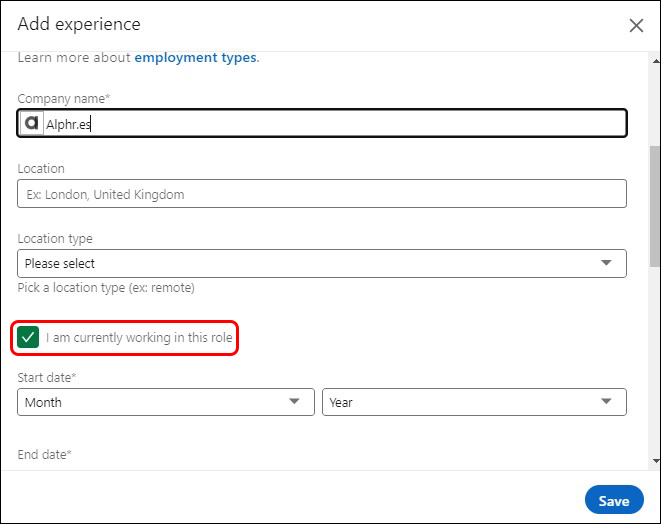Adding multiple positions at the same company on LinkedIn can be a bit tricky, but it's essential for showcasing your career progression effectively. Whether you've held various roles or have taken on different responsibilities, displaying this information accurately can make your profile stand out to recruiters and connections. In this guide, we’ll explore the ins and outs of LinkedIn's structure and how to navigate it to reflect your professional journey seamlessly.
Understanding LinkedIn's Structure
LinkedIn is designed to present your professional life in a linear, easily digestible format. However, when you’ve held multiple positions within the same company, it’s crucial to utilize the platform's features to your advantage. Here’s a breakdown of how LinkedIn structures your work experience and some tips to optimize it:
- Experience Section: This is where all your job roles are listed. Each position is typically displayed in chronological order, but you can group multiple roles under a single company heading.
- Company Page: When you add your work experience, LinkedIn automatically links it to the company’s profile. This feature enhances credibility and makes it easier for viewers to understand your professional background.
- Job Titles: You can specify different job titles for each position you held. This is important because it reflects your career growth and the skills you developed over time.
- Dates of Employment: Ensure you accurately input the start and end dates for each position. This timeline gives recruiters a clear view of your tenure and career trajectory.
By leveraging these structural elements, you can effectively showcase your evolution within a company, demonstrating your adaptability and growth to potential employers. Remember, clarity and honesty are key when presenting your professional history!
Curl error: Operation timed out after 50012 milliseconds with 17945 bytes received
Also Read This: How to Update Your LinkedIn Profile Without Notifying Everyone
Steps to Add Multiple Positions
Adding multiple positions at the same company on LinkedIn is a great way to showcase your career progression and the various responsibilities you've held. Here’s how to do it:
- Log into Your LinkedIn Account: Start by accessing your LinkedIn profile. Make sure you're logged in.
- Navigate to Your Profile: Click on your profile picture or the “Me” icon at the top right corner and select “View Profile.”
- Scroll to the Experience Section: Locate the “Experience” section, where your job positions are listed.
- Add a New Position: Click on the “+” icon or the “Add experience” button. This allows you to create a new entry.
- Enter Company Name: Type the name of your company. If you’ve already listed the company, it will auto-populate. Select it.
- Position Title: Fill in your job title. Be specific about your role to attract the right attention.
- Employment Dates: Select the start and end dates for this role. If you still hold this position, check the “I currently work here” box.
- Describe Your Role: In the description box, detail your responsibilities and achievements. Use bullet points for clarity!
- Save Changes: Once you’ve completed the entry, click “Save.” Your position will now appear under your company’s profile.
Also Read This: How to Calculate Engagement Rate on LinkedIn for Better Post Insights
Tips for Effectively Showcasing Your Roles
Effectively showcasing your multiple roles can really make your LinkedIn profile stand out. Here are some tips to help you out:
- Use Clear Job Titles: Ensure each title accurately reflects your responsibilities. This helps recruiters understand your career trajectory.
- Highlight Achievements: Focus on what you accomplished in each role. For example, use phrases like “Increased sales by 30%” or “Led a team of 5.”
- Be Concise: Avoid long paragraphs. Use bullet points to keep descriptions brief yet impactful. Aim for 3-5 bullets per role.
- Tailor Descriptions: Adjust your role descriptions based on your target audience. Use keywords relevant to the jobs you’re interested in.
- Show Progression: If you’ve been promoted, emphasize the growth in responsibilities. This highlights your value to employers.
- Engage with Visuals: If possible, include media like images or documents that showcase your work. This adds a personal touch!
Also Read This: How to Cancel Premium LinkedIn Subscription: A Step-by-Step Guide
Common Mistakes to Avoid
When adding multiple positions at the same company on LinkedIn, it's easy to make some common mistakes that can undermine your professional profile. Here are the key pitfalls to watch out for:
- Inconsistent Dates: Ensure that the start and end dates for each position are accurate and do not overlap unless they are concurrent roles. This helps maintain clarity in your career timeline.
- Vague Job Titles: Use specific job titles that reflect your actual role. Titles like "Team Member" can be confusing; instead, opt for "Marketing Specialist" or "Software Engineer" to convey your responsibilities better.
- Neglecting Job Descriptions: Each position should have a brief description that outlines your key responsibilities and achievements. Avoid generic descriptions; instead, highlight specific projects or metrics that demonstrate your contributions.
- Overloading with Information: While it’s important to share accomplishments, avoid turning each position into a lengthy essay. Aim for concise bullet points that are easy to read.
- Ignoring Skills and Endorsements: Each role should reflect relevant skills. Update your skills after adding new positions to ensure they align with your career progression and attract endorsements from colleagues.
- Inconsistent Formatting: Keep the formatting uniform across all positions to maintain a professional appearance. Use similar bullet styles and paragraph structures to enhance readability.
Conclusion
Adding multiple positions at the same company on LinkedIn is a fantastic way to showcase your career growth and versatility. By following best practices and avoiding common mistakes, you can present a polished and professional profile that stands out to recruiters and connections alike.
Remember, your LinkedIn profile is often the first impression you make, so it's worth investing the time to get it right. Emphasize your unique contributions, quantify your achievements, and make sure your narrative flows logically. With a well-crafted profile, you can effectively communicate your journey and value in the workplace.
So, take a moment to refine your LinkedIn experience section—this could open doors to new opportunities and help you connect with like-minded professionals in your field. Happy networking!

 admin
admin








